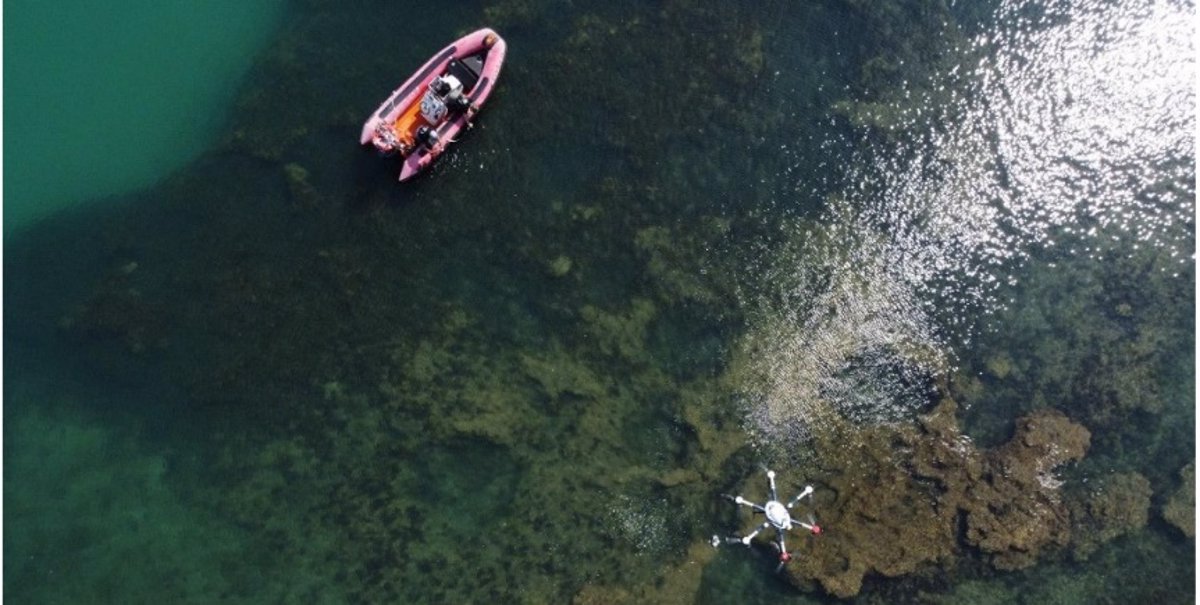CSIC develops software to improve the study of aquatic ecosystems

SEVILLE, January 22 (EUROPE PRESS) –
The Institute of Marine Sciences of Andalusia (ICMAN), a research center of the Supreme Council for Scientific Research (CSIC), is leading the development of an open-source algorithm capable of solving the limitation that exists when working with sensors equipped with drones. in water systems.
Developed in the Python programming language, this software allows you to look beyond common pitfalls in drone technology.
such as inaccuracy in georeferencing images and subsequent creation of orthomosaics (a composite image from various aerial photographs of the territory) due to the lack of common elements between the images. This new system allows scientists to study water systems by overcoming the limitations faced by photogrammetry and offers a viable alternative to traditional monitoring methods that are subject to logistical and time constraints.
Aquatic ecosystems are essential for maintaining biodiversity, regulating biogeochemical cycles, and supporting human life; However, the combined impact of climate change and human impacts is still unknown. Since 1978, satellite remote sensing has been used to comprehensively monitor aquatic systems at large scales, providing highly valuable information on ocean dynamics at different spatial, spectral and temporal resolutions.
In recent years, drones have become a tool
are essential for monitoring, filling the gap between satellite imagery and ground-based observations on coasts and seas, and they do so with good spatial resolution. They are also more flexible, efficient, provide greater temporal resolution than satellites, and are not affected by cloud cover.
Sequential images taken by various drone-mounted sensors were processed using photogrammetric software, which finds common points between images based on a triangulation process and combines them into a final orthomosaic of larger areas than those obtained from an individual image.
Although the results are very promising on land surfaces, this photogrammetric software is not able to reconstruct the orthomosaic on dynamic surfaces covered by water, mainly due to the lack of common features between images. For this reason, the vast majority of marine drone research is limited to coastlines or small inland bodies of water.
This study, which was conducted between 2022 and 2023 between Antarctica, the United States and southern Spain, provides an algorithm that, based on information provided by the positioning of the drone during each acquisition (latitude, longitude,
altitude and flight orientation) allows each image to be accurately georeferenced to create an orthomosaic that shows areas completely covered by water while maintaining centimeter spatial resolution.
“This algorithm has been tested at several research sites around the world (Spain, USA or Antarctica) using visible, thermal and
multispectral, providing an error in georeferencing quality of no more than 4.5 meters and maintaining the centimeter spatial resolution of unmanned vehicles. The scientific community needs reliable approaches to understand certain marine and coastal processes, and this method represents a significant advance in the use
drones to study marine ecosystems at the highest scale,” points out principal investigator Alejandro Roman from Ickman.
GitHub code is designed to be accessible and open to the public. This code extracts, from the metadata of each image captured by the corresponding sensor, the geometry of each image (latitude, longitude, altitude, and flight orientation) and the characteristics of the sensor.
(focal length, grip size, sensor size and focal plane dimensions).
Based on this information, each capture is first correctly georeferenced, providing precise coordinates for each corner of the matrix based on geometric projections from its center point (coordinates known in the metadata).
Once each image is correctly georeferenced, they are combined to create the final orthomosaic. This uses a method that calculates the average between pixels at exactly the same position based on a previous georeference. Finally, the filtering process is carried out and
spatial gradient to eliminate streaks corresponding to each flight line and to eliminate some artifacts in the final product that may arise due to poor flight conditions or the positioning accuracy of each sensor.
“This innovation opens up limitless possibilities for the use of drone-mounted sensors in coastal and marine environments, where no commercial software currently allows the creation of mosaics and therefore the ability to use drones in this type of research.” Roman concludes.